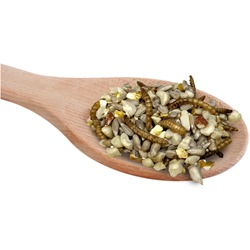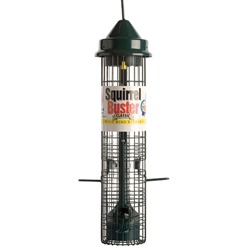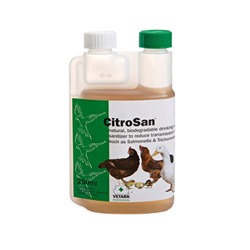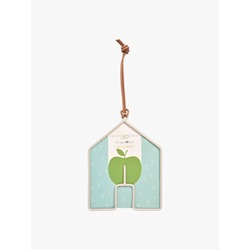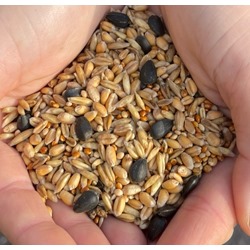Unfortunately, many of Britain’s favourite feathered friends are becoming more difficult to spot due to declining bird populations. Endangered UK birds are threatened by issues like global warming, disease, and food scarcity.
In the UK, the Birds of Conservation Concern (BoCC) system is used to sort bird species into three different lists: Red, Amber and Green. The Red List comprises the UK’s most endangered birds, many of which are at risk of extinction.
All three lists are updated periodically, to give an accurate impression of which birds are currently at risk. Sadly, the picture is getting bleaker as time goes by; the most recent edition of the Red List (published in 2021) featured eleven more birds than the previous one.
Read on to learn about some of the UK’s most endangered bird species, as well as what can be done to help them.
1) Starling
Found in UK gardens, starlings are excellent mimics!

If you have a bird feeder, you might be surprised to see starlings on this list. After all, they are fairly common visitors to UK gardens. However, their population has drastically declined since the 1980s. This fast rate of decline is extremely concerning and has earned them a place on the Red List.
It’s been suggested that this decline is due to pollution and food scarcity caused by rising temperatures. Starlings eat a wide variety of foods, including spiders and moths, as well as nutritious fruit, but it is getting harder for them to access these resources. Putting out fruit for local starlings is just one way you can help – but we’ll have more advice on that later in the article.
2) Goldeneye
A diving duck known for its golden gaze!

Goldeneye ducks are named for their yellow eyes, which make them easy to recognise despite the fact that males and females have different feather patterns. Brown-headed goldeneye ducks (like the one pictured above) are female, whereas male goldeneyes have green and white heads. You might be more familiar with these birds if you live in Scotland, where many of them nest.
The goldeneye duck has sadly been moved from the Amber List to the Red List, indicating a risk to this bird’s future. There are only around 200 breeding pairs left in the UK. Thankfully, measures have now been taken to try and save this duck, and there were more than 25 young goldeneyes born in Cairngorms National Park in 2023.
3) Greenfinch
A vibrant, charismatic bird with a distinctive tweet!

Greenfinches might be small, but thanks to their bright feathers and loud ‘wheezing’ bird call, they are easy to spot. If you live in the UK and put out bird seed regularly, you’ve likely seen a greenfinch or two in your garden – possibly with a flock of other finches in tow! They tend to flock together in winter when searching for seeds.
Greenfinches were previously on the Green List, but a rapid decline in breeding population means that they are now a species of conservational concern. This is likely due to an unfortunate spread of the parasite-induced disease known as trichomonosis. Remember to clean your bird feeders regularly!
4) Merlin
The UK’s smallest bird of prey – a small falcon with pointed wings.

Merlins are on the Red List of endangered UK birds due to low population numbers, but their population has fluctuated over time. They were briefly taken off the Red List when numbers went up, though unfortunately they are now considered to be at risk again.
For now, at least, merlins are widespread and can be found throughout much of the UK during breeding season, so you might be able to spot one of these birds near you! In winter, you’ll find merlins hiding out in farmland and coastal marshes.
As a bird of prey, merlins mainly eat smaller birds and mammals – though they will also eat insects.
5) Linnet
Once a common farmland bird, loved for their beautiful birdsong

A linnet is a type of finch with a pink forehead and breast. Linnets like seeds so much that they were named after them! Specifically, they are named after linseed, which is another name for flaxseeds. You may see linnets among large flocks of seed-seeking birds, particularly on UK farmland.
According to the RSPB, the UK’s linnet population has declined by 72% since 1967 (mostly due to a loss of their food sources). Even more worryingly, linnets are not just at risk in this country – they are facing a global population decline.
How You Can Help Endangered UK Birds
As you may have noticed, many endangered UK birds are on the Red List because they don’t have access to enough food. Providing nutritious bird foods, like seeds and insects, can help these birds to survive. Giving birds access to a water source can also be helpful, so consider adding a bird bath to your garden if you have room.
As in the case of the greenfinch, bird populations will sometimes decline due to avian diseases. To help prevent the spread of these fatal illnesses, try to keep your bird baths and feeding stations as clean as possible. We recommend using Ark-Klens™ disinfectant (diluted in water) to clean your feeders, tables and baths. And be sure to change feeds regularly; bird seed will go mouldy if left in the feeder for too long.
You can also try to boost natural food sources, which is particularly helpful for birds like starlings who are losing these resources. Create ponds, plant wildflower seeds, and let your grass grow! You could also try planting bushes and hedgerows, so birds like linnets can nest and take cover. Don’t forget to add nesting boxes to your garden, as these can provide birds with necessary shelter from predators and other dangers.
Really Wild Bird Food offers a large variety of supplies for the care and protection of wild birds, including nutritious bird food, homes and feeders. If you’re interested in protecting endangered birds, you can get started through the links below!
Bird Foods Bird Feeders
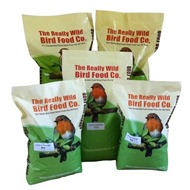
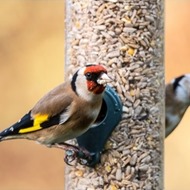 Back
Back Bird Feeders
Bird Feeders  Seed Feeders
Seed Feeders Peanut Feeders
Peanut Feeders Peanut Butter Feeders
Peanut Butter Feeders Suet & Fat Feeders
Suet & Fat Feeders Window Feeders
Window Feeders Hanging Feeders
Hanging Feeders Feeding Stations
Feeding Stations Ground Feeders
Ground Feeders Easy Clean Feeders
Easy Clean Feeders Bird Tables
Bird Tables Seed Trays
Seed Trays Bird Baths & Drinkers
Bird Baths & Drinkers Feeder Accessories
Feeder Accessories Feeder Hygiene
Feeder Hygiene Squirrel Proof Bird Feeders
Squirrel Proof Bird Feeders For the Kids
For the Kids Niger Seed Feeders
Niger Seed Feeders Mealworm Feeders
Mealworm Feeders Bird Food Storage
Bird Food Storage Fat Ball Feeders
Fat Ball Feeders Tube Feeders
Tube Feeders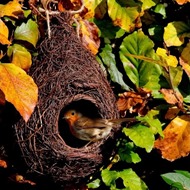
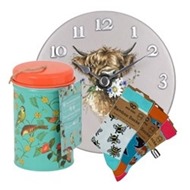
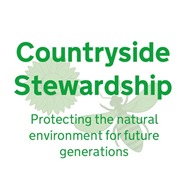
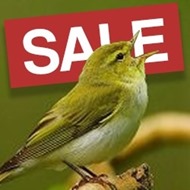
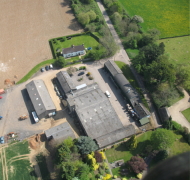 Our Farm
Our Farm Contact Us















